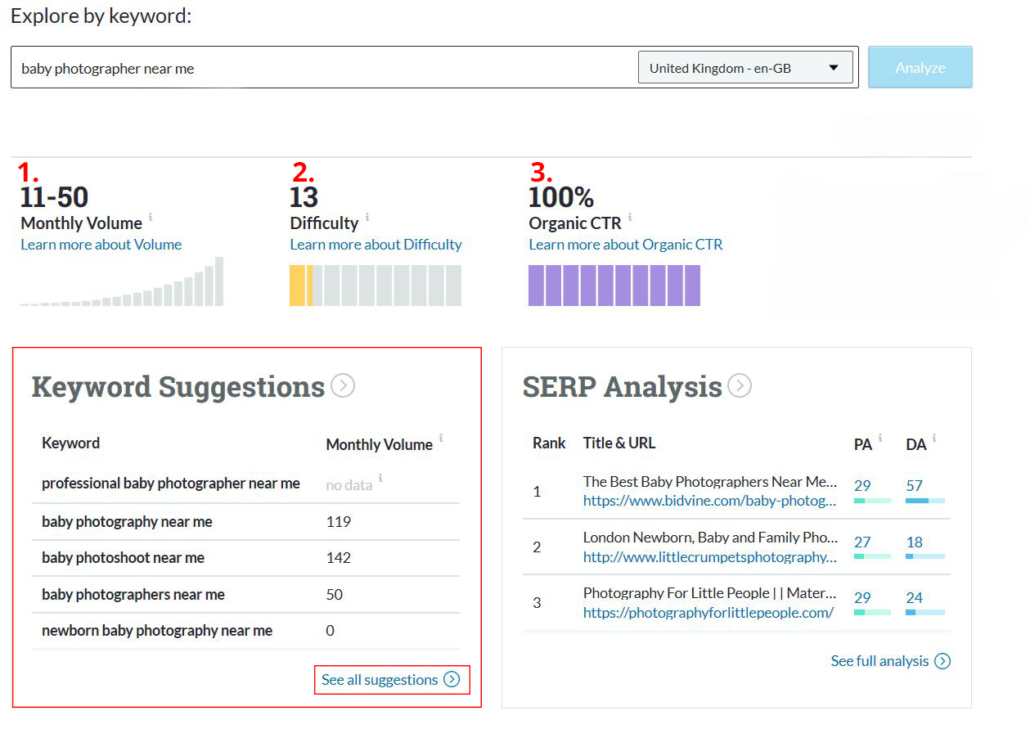Who would not love to rank on Google’s first page?
SEO can do magic for your marketing, but if you are thinking that SEO is “free”… think again.
As competition increases and Google becomes smarter and smarter (gone are the times when stuffing your page with keywords was all you needed), ranking well on search results for keywords that are driving enough traffic to your site takes TIME.
Now I don’t know about you, but having “too much free time” is certainly not one of my biggest worries. So how do you know if working on SEO right now, is going to impact your business significantly enough to drive enquiries and bookings? More importantly, how do you know that this will happen SOON?
Yes, in the long run it may well help. However, as we have already said, time is of the essence. Even though it’s important to work on elements of our business that will bear fruit ONE day, what about the immediate future?
Let’s look at some tactile questions that can help you get some REAL answers!
- Is this (what I choose to spend my time and energy on RIGHT NOW) actually going to have a significant enough impact on my business (AKA, will I see some type of return in the next 6-12 months)? If the answer is no, forget about it for now.
- How long is this project going to take if I do it myself?
- Is there a quicker way to achieve the same result by investing money instead of time?
Now if the answer to the first question is yes, and we know the answer to the other 2, there is another aspect to consider:
- Prioritise high impact projects. Revamping your logo is cool, but I promise it’s not going to fill up the pages of your diary.
- Invest money to speed up growth. Understand that marketing is a long term process, but no studio can survive for long if there is no momentum around it. If your business feels like a broken cart being dragged on the sand… if enquiries and bookings are dripping in slower than ever… it’s time to push.
- Only invest your time on projects that have high impact and you know will bring revenue in. You will never get your time back, don’t waste it to write 1000 posts to try and rank on a low volume keyword.
Now – I have said a lot above: To explain it in a more simplistic way, when you think about a key word, the way we instinctively judge it, is how relevant a particular keyword is to our business. But this is only one factor that should be considered. A keyword should be evaluated at the very least using 3 factors:
- Volume of monthly searches
- The difficulty for you to rank on these particular keywords
- The organic click-through rate. ( Google is not only a list of results these days. When someone searches a keyword, there are PAID ads everywhere, or they may see a specific business with reviews or even a questions snippet ) How likely are they to click on the list of results? How likely are they to click on YOUR business featuring on that list?
So … What are low volume key words?
These are simply keywords that simply are not “searched” enough on Google to make a real impact on your business. Of course, you can still include these on your “favourite” keywords list, but you should probably prioritise keywords with a higher volume of searches first.
So… how do we ensure that we are spending time to improve our SEO on a keyword that is actually going to have a real impact on our business?
Guessing it’s certainly not an option, so let’s look at a tool that can give us all the answers we need (well… most of them): Moz.com Keyword Explorer.
STEP 1
Take your list of favourite keywords, or keywords you want to try and rank for. If you don’t have one… create it (in Excel format, possibly)!
Try to strike a balance between “obvious” keywords (“newborn photographer near me”) and others you can find thinking out of the box (“how to create first year album”)
STEP 2
Open Moz.com Keyword Explorer and search one keyword at a time.
Type the word in and click “Analyze”. The result page will look something similar to the one below. As you can see, Moz is giving you the answer we were looking for!
1. Monthly Volume of Searches
2. How difficult it is to rank for that keyword
3. Organic Click Through Rate

STEP 3
On your list, next to each word enter the rating for those 3 paramenters… this will help you decide your SEO priorities.
As a bonus, for each keyword, Moz gives you a list of “Suggestions”: other related keywords that you might want to consider. Absolutely worth clicking on “See all suggestions” for each keyword on your list.
STEP 4
Now look at your list, exclude or put on the side keywords with a volume of searches too low to be worth the time investment, and for the others make a plan:
- Keywords with low difficulty, high Organic CTR – THESE ARE A PRIORITY FOR YOUR SEO STRATEGY
- High difficulty, high Organic CTR – YOU CAN WORK ON THESE, BUT BE AWARE THAT IT MIGHT TAKE A VERY LONG TIME TO SUCCEED… so results are going to be very slow
- Low difficulty, Low Organic CTR – HERE YOU SHOULD COMBINE SEO (to take advantage of the low difficulty) and some targeted PAID ADS. Remember? Organic CTR is the percentage of clicks that traditional, organic link among the search result will get. Low CTR means more people will click on Ads or other “snippets”.
- High difficulty, Low Organic CTR – THIS IS ADS TERRITORY! Going all organic (SEO) here is going to take A LONG TIME… and give you little results.
Note: As explained in a previous post, Moz can also help you find ideas for your blog posts!
Does this feel too complicated? Book a free coaching call with me and… let’s talk!
